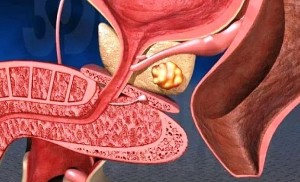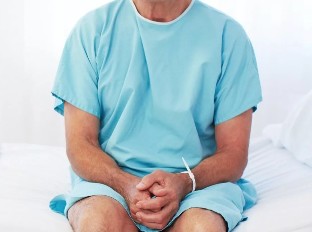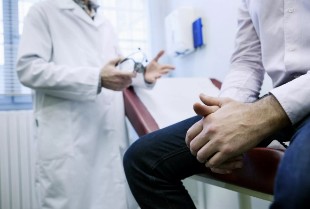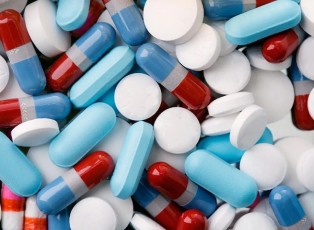What is prostatitis are aware of the many representatives of the male sex. The disease is manifested by frequent urges to urinate, pain, violation of the erection, and other symptoms suggesting a pathology of the urinary system. To refine the diagnosis requires referral to a urologist, who will see if it is the cause of discomfort, and to explain what is this disease, what does his name mean, what are the symptoms and treatment.

The function of the prostate
Prostate gland — the gypsy moth, which is composed of glandular tissue and o d cells fibrino gen-muscle of the film, which is located in front of the pelvic region. The upper part is in contact with the bladder, to the rear — with the rectum front with the pubic bone.
The main purpose of the prostate – the awarding of a special secret, ensuring sperms vitality and mobility.
This substance is produced in acinus – small slices, surrounded by the sheath of muscle.
Other functions of the prostate are:
- the protection of involuntary urination;
- the prevention of the flow of ejaculate into the bladder;
- the infection prevention senior divisions urinary system (kidneys, ureters).
The functioning of the prostate control the androgens, estrogens, steroids, and hormones of the pituitary gland.
Description of the disease
Android of the prostate gland (prostatitis is a misspelling for the spelling) is a common pathology of the prostate, accompanied by inflammation, of the violation of urination and mental disorders. The swelling causes narrowing of the ducts of the prostate, interfering with the output of prostatic juice, and causes stagnation.
Most often disease of prostate cancer in men are diagnosed at the age of 25 – 50 years. Sometimes, the pathology is felt sooner or later.
The causes of
Prostatitis in men develops due to the following reasons:
- Non-communicable diseases. The more often the deterioration of the prostate leads to a violation of the circulation of blood and lymph in the prostate gland, as well as of stagnation, due to a rare ejaculation. Sometimes, the pathology develops because of the all-too-frequent sexual contacts, or regularly shaken (for example, in the motorcycle).
- The infectious diseases. The inflammation of the prostate develops on the background of the penetration of the infection. This can be bacteria, viruses or fungi that penetrate into the prostate through the blood or lymph from the urethra or infected source (throat, teeth, maxillary sinus).

The factors which cause prostatitis in men are:
- hypothermia;
- injuries;
- a genetic predisposition;
- least practicing a way of life or regular physical fatigue;
- regular stress;
- bad habits;
- a poor diet;
- insomnia, lack of sleep prolonged;
- immunity is low;
- chronic infectious processes;
- caries.
The main cause of the disease is considered to be a violation of the reflux of the blood capillary, which leads to stagnation, the reduction of local immunity and the proliferation of the bacterial flora.
The influence of the factors aggravating the inflammation of the prostate, extending the duration of the treatment and promotes the development of complications.
Types and symptoms
The inflammatory process of the prostate is manifested:
- the pain in the pelvic region (at the exit of the urine, ejaculation, and defecation);
- co-ordinate to recommend to urinate;
- emission of blood, mucus, pus from the urethra;
- clouding urine are sources;
- the low libido and other disorders.
The degree of severity of clinical signs depends on the cause and the form of the disease.
Acute

Acute Inflammation of the prostate gland, usually accompanied by an increase of the temperature (axillary, rectal), and symptoms of intoxication (headache and pain, chills, nausea).
Sick of the prostate gland compresses the surrounding tissues, nerve endings and causes:
- constipation;
- a violation of urination, up to the complete cessation of the flow of urine;
- the pain in the lumbar region, the scrotum, the groin.
Prostatitis acute in men most often appears on the bottom of an infection of the prostate pathogens.
It is important! Sometimes an acute inflammation of the prostate appears on the bottom of the held on the eve of the biopsy.
Chronic
The inflammation of the prostate is often revealed by chance during the planned manner of inspection or investigation of other diseases.
The progression of the pathology leads to disruption of the morphology and function of the prostate, which is manifested by:
- painful sensations;
- dysuria;
- sexy of mental disorders.
Calculous
This is one of the most common complications from a chronic form of the disease, characterized by the formation of stones in the acinus.
How to manifest a shock to the prostate gland in men, which has been calculous inflammation depends on the degree of severity. The main clinical signs of the emit a throbbing pain in the groin, pubis and testicles.
The long absence of treatment facing the development of inflammation of the seeds of the bubble, an abscess of the prostate gland, sclerosis of the prostate.
Stagnant
As to prostate disease, and why it develops, they do not know all the representatives of the male sex.
This type exposed to the person who:
- a little;
- have bad habits;
- accustomed to a large part of the day to sit;
- do not lead a regular sexual life;
- practice the sex acts.
The symptoms of inflammation of the prostate gland, on a background of stagnation are the same events and chronic calculous form of the disease, so to further refine the diagnosis is necessary laboratory and instrumental diagnosis. The first symptom that is manifested by a stagnation in of prostatitis in men – the deterioration of erection.
Fight against infections
The cause of the disease is understandable from the name. The more often the prostate-related bacteria, is extremely rare, viruses and fungi. In most cases, the inflammatory infection of the prostate is a complication of other forms.
To him, leads to a fall in general or local immunity on the merits:
- hypothermia;
- other objects with sharp or chronic infections;
- the cancer tumors;
- autoimmune diseases;
- the interruption of the functioning of adjacent organs;
- the poor image of the life.

How to manifest the prostate in men, who has suffered an inflammation-infectious type depends on the progress of the disease. Often, the complaints are similar to acute events or chronic prostatitis.
Purulent
In advanced cases in the pathological process involves all of your body.
Early (catarrhal) the form of the purulent inflammation is cleared symptomatology and looks at the manifestation of the disease of the bladder interstitial cystitis. As the pain intensifies, and appear to be expressed by signs of intoxication.
Abscess form of the disease, is the most onerous, and often peritonitis, sepsis and death.
The diagnosis
During the first application of iron to look through the anus. During palpation the doctor determines the size, the structure and contours of the authority.
At this stage, is preceded by a preliminary diagnosis, which asks you to confirm using the survey, with the techniques of the laboratory:
- deployed and the biochemical analysis of blood;
- the definition of PSA (prostate specific antigen);
- and the clinical examination bacteriological examination of the urine, prostatic secret, the keys of the urethra;
- the sensitivity to antibiotics;
- sperm;
- the identification of the c-reactive protein;
- the cystoscopy and histology of puncture content.
Tools apply:
- rectal ULTRASOUND;
- CT or MRI of the prostate and other organs in the pelvis;
- a biopsy.
The diagnosis of the disease pass into the state of private laboratories.
The principles of treatment

Where and how to treat the inflammation of the prostate, decides to doctor about the results of the analyses. If the patient's condition is satisfactory, you can visit a dispensary and medication. In the contrary case, the doctor explains to a man of risks associated with the disease and insisted on hospitalization. In severe cases, the patient is urgently hospitalized.
Full
Conservative treatment involves taking medicines that treat the cause of the disease, stagnation and the inflammatory process of the prostate.
This list includes:
- the antibiotics (depending on the results of the antibiogram);
- the anti-inflammatory non-steroid original, or corticosteroids;
- immunomodulators;
- vitamins and minerals;
- drugs vasodilators (in the absence of contraindications).
During a severe pain, prescribed analgesics or antispasmodics.
After elimination of the acute phase use of mthodes physiothrapeutiques:
- a prostate massage;
- the electrophoresis;
- micro therapy;
- ultrasound.
In severe cases pass partial or complete prostatectomy (removal of the prostate). Prostatitis with stones treated by identical, but a massage androgen-dependent of the authority is strictly contraindicated.
Home
What is prostatitis and how to treat it, want to know a lot of men. For outpatient treatment is not finished emergency and hospitalization to the hospital, you must follow all the recommendations of the doctor: drink prescribed the pill, to avoid the triggering factors and not to self-give medications. In addition to the basis of a therapeutic regimen useful is a medicinal plant that chooses a doctor.
For the elimination of the disease useful:
- chamomile;
- peony;
- the seeds and leaves of plantain;
- the stinging nettle;
- the root of burdock;
- the pumpkin seeds.

Prevention
The best prevention of prostatitis in men regular call to a doctor and adjustment of the modes of life, which must include:
- daily exercise;
- sex on a regular basis;
- a good nutrition;
- a good night's sleep.
Stress, bad habits and other aggravating factors, however, should be deleted. Prostatitis in men is often leads to erectile dysfunction.
To eliminate the disease or to prescribe drugs from the group of inhibitors of PDE-5. If this does not help, it requires the consultation of a psychologist.





































